Priority can be given to attack UAVS and kamikaze drones
The defense Ministry plans to adjust the development plans for unmanned aerial vehicles (UAVS). The changes were prepared based on the experience of Syria and the study of modern conflicts, including the Nagorno-Karabakh conflict, sources in the military Department told Izvestia. Goals for the number of different classes of drones may be revised. It is also possible to change priorities in the development of new samples. Izvestia looked at which programs will gain an advantage, and which will be curtailed, and what the military wants to get in the end.
Critical year
This year, it was attack drones that played a key role in three different conflicts at once, military expert Vladislav Shurygin told Izvestia.
- Turkey with their help slowed down the offensive of the Syrian government in Idlib, - said the expert. — In Libya, they also helped turn the tide and push Haftar's forces back from Tripoli. More recently, we have seen their use in the battles for Nagorno-Karabakh.
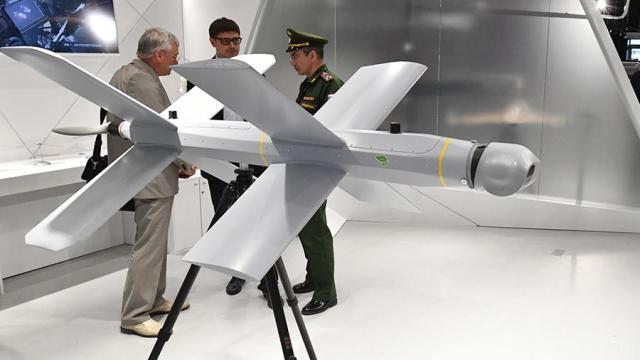
Barraging kamikaze drone "Lancet" at the Kalashnikov concern stand during the opening of the international military-technical forum "Army-2019" in the Patriot exhibition center»
Image source: Photo: RIA Novosti/Mikhail Voskresensky
The experience of this conflict will be especially actively studied both abroad and in Russia, the expert believes. For the first time, kamikaze drones were used in such numbers. They demonstrated their high efficiency even against the regular army, equipped not only with armored vehicles and artillery, but also with full-fledged short-and medium-range air defense systems, Vladislav Shurygin concluded.
Russia is also a lack of development of such drones. But this direction was not considered a priority. Not enough time was given to it, and most importantly — resources. Their development budgets were not comparable with foreign or priority projects of the domestic military-industrial complex. Now the situation may change.
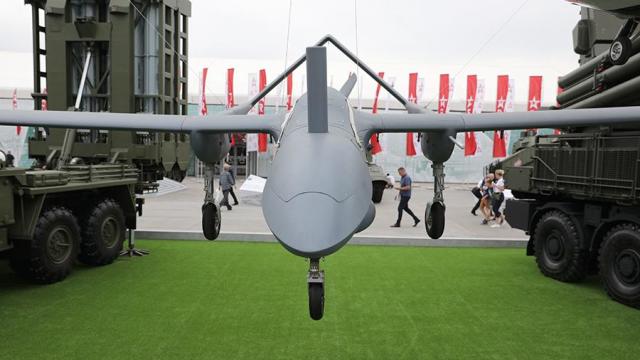
Korsar unmanned aerial vehicle (UAV) at the international military-technical forum "Army-2019" in the Patriot exhibition center»
Image source: Photo: IZVESTIA/Dmitry Korotaev
This week, the head of Rostec, Sergey Chemezov, told the media that light barrage drones-kamikazes "Lancet", created by the Kalashnikov concern, were tested in Syria. The head of the state Corporation also said that the impact function will also be used by the medium-sized Korsar UAVS that are currently being tested, weighing about 200 kg.
Power problem
In 2020, a long-awaited event took place — the first large strike UAVS of domestic design were delivered to the training centers of the Ministry of defense. They also demonstrated an impressive Russian line of new small-sized ammunition for them.
The Sukhoi company has started building a batch of experienced 20-ton "Hunters" that can not only be bombers, but also compete for air supremacy with advanced fighters. According to the head of the United aircraft Corporation Yuri Slyusar, this summer the defense Ministry asked to speed up their development as much as possible and reduce its time by more than a year.
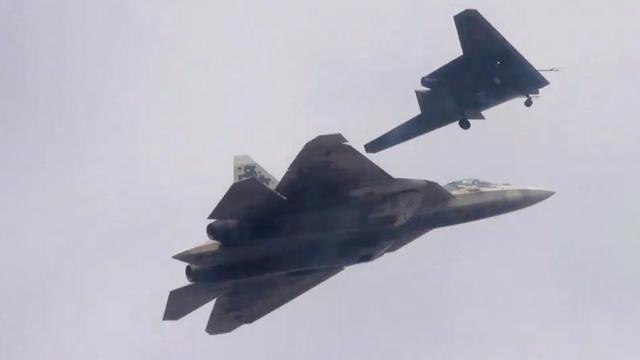
The newest attack drone "Hunter" during a joint flight with the su-57 at one of the test airfields of the Russian defense Ministry
Image source: Photo: RIA Novosti/Ministry of defense of the Russian Federation
The developer has completed the stage of research and development work and started development work in 2020. Construction began on several more prototypes for flight and static testing. Initially, the development was expected to be completed by the end of 2025. The defense Ministry insists on ending them by the beginning of 2024.
The development of the seven-ton Altius is still incomplete. Due to sanctions that left it without imported engines and components, the project had to be reworked. The need to localize it delayed the program for more than a year. But this drone with a long flight duration is necessary. It looks like the most suitable candidate for the role of a mass heavy strike vehicle, comparable in capabilities to a real bomber. No wonder it tested new " smart "bombs of the" Thunder " family, which are not inferior in power to the usual five-hundred-kilogram ones.
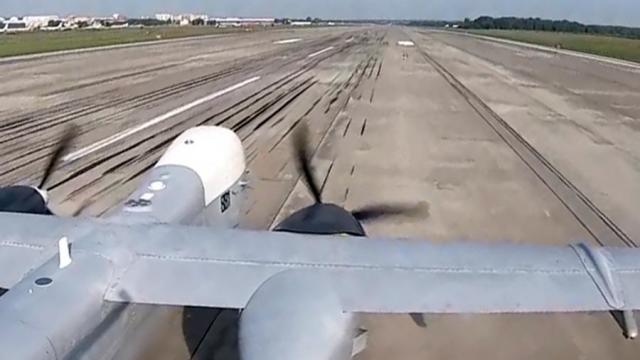
Altius-U unmanned aerial vehicle (UAV) during takeoff
Image source: Photo: RIA Novosti/Ministry of defense of the Russian Federation
— The key problem we have is the lack of our own line of engines. Both electric for small devices, and internal combustion for large ones. We need models with capacities from five to 150 HP — " military expert Viktor Murakhovsky told Izvestia. - There are experimental products, but there is no mass production. The second problem is the creation of small-sized ammunition. Due to the lack of demand, this has not been done for a long time, but in recent years a number of enterprises have been working in this direction. Something has already been done and is being applied in Syria. But in some areas, we still have to wait. As for drones-barrage ammunition, they are also already used in Syria, but these are isolated samples. We need to decide which models should be put in the series.
We don't have a long-range, high-altitude, and long-range strategic drone like the American Global Hawk. We don't even know about R & d in this direction yet. Perhaps it is not considered important, the expert said.
New direction
The Kronshtadt group of companies, which supplied the Ministry of defense with the first set of three drones and a control station for them, has yet to demonstrate its capabilities for mass production of Orions. But the company's ambitions are not limited to them. At the Army 2020 exhibition, the company for the first time presented full-size models of larger devices that it is developing on its own initiative.
Among them is the seven-ton thunder jet, which must use both bombs and air–to-air missiles. The experience gained during the creation, testing, and mass production of the Orions can help the company bring its heavier vehicles to life faster. However, so far there have been no official statements about new contracts for them from the Ministry of defense, and the work itself is at an early stage.
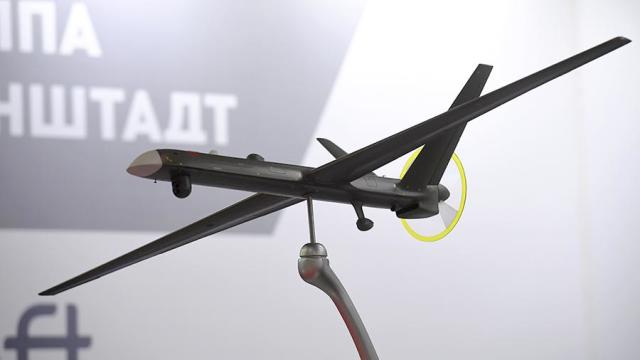
Model of the medium-altitude long-duration UAV Orion-e at the International naval salon in St. Petersburg
Image source: Photo: RIA Novosti/Alexander Galperin
The time has come to modernize and reduce the diversity of the "first wave" light reconnaissance vehicles in service. They were developed and began to enter the army in 2013-2014. The most successful models, such as the Orlan-10 and Aileron-3, can be upgraded using more modern components. The remaining samples should be replaced with perspective models.
— As for the use of tactical-class drones and the saturation of troops with them, we have everything in order, - Viktor Murakhovsky believes. — Each brigade of the Ground forces has a company of drones, they are in the Marines and coastal troops of the fleet. In Syria, we are able to simultaneously keep 50-70 drones in different parts of the country. So we can't say that we are hopelessly behind. But there are areas where you still need to make an effort.
Russia, according to the defense Ministry, is armed with more than two thousand small reconnaissance UAVS with advanced capabilities. A family of complex and heavy drones with a mass of more than one ton is being developed. But the niche of medium-sized cars, weighing from a hundred to a thousand kilograms, remains almost unoccupied. It is in it that it is possible to develop new shock and multi-purpose vehicles with great combat potential faster and cheaper.
Anton Lavrov

